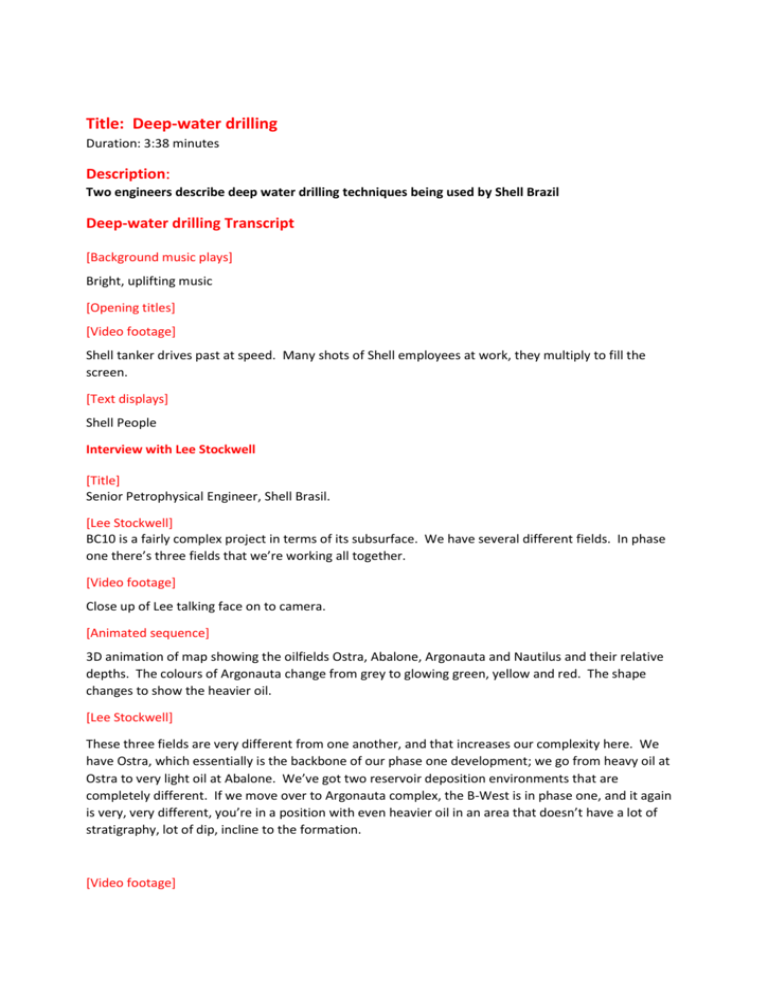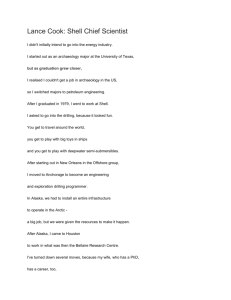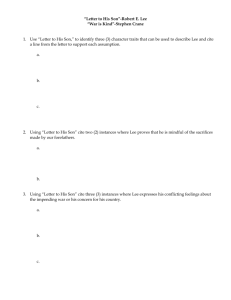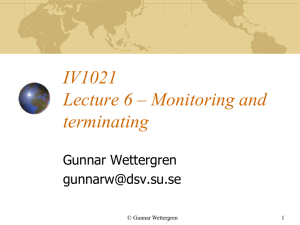Transcript
advertisement

Title: Deep-water drilling Duration: 3:38 minutes Description: Two engineers describe deep water drilling techniques being used by Shell Brazil Deep-water drilling Transcript [Background music plays] Bright, uplifting music [Opening titles] [Video footage] Shell tanker drives past at speed. Many shots of Shell employees at work, they multiply to fill the screen. [Text displays] Shell People Interview with Lee Stockwell [Title] Senior Petrophysical Engineer, Shell Brasil. [Lee Stockwell] BC10 is a fairly complex project in terms of its subsurface. We have several different fields. In phase one there’s three fields that we’re working all together. [Video footage] Close up of Lee talking face on to camera. [Animated sequence] 3D animation of map showing the oilfields Ostra, Abalone, Argonauta and Nautilus and their relative depths. The colours of Argonauta change from grey to glowing green, yellow and red. The shape changes to show the heavier oil. [Lee Stockwell] These three fields are very different from one another, and that increases our complexity here. We have Ostra, which essentially is the backbone of our phase one development; we go from heavy oil at Ostra to very light oil at Abalone. We’ve got two reservoir deposition environments that are completely different. If we move over to Argonauta complex, the B-West is in phase one, and it again is very, very different, you’re in a position with even heavier oil in an area that doesn’t have a lot of stratigraphy, lot of dip, incline to the formation. [Video footage] Close up of Lee talking face on to camera. Interview with Gunnar Holmes [Title] Geophysicist, Shell Brasil [Gunnar Holmes] The geology of the Campos basin is such that you’ve got mountains right near here, Rio, for example, where they are almost 1,000 metres above elevation, and where we’re drilling is almost 2,000 metres below sea level. So the sand has basically moved about 150 miles, or 200 kilometres from these mountains here, all the way offshore, and they’ve travelled into the BC10 area for, you know, tens of millions of years. [Video footage] Close-up of Gunnar Holmes talking about Campos basin. Colourful diagrams are on the wall behind him. [Animated sequence] 3D animation of well site for geological illustration. Markers show in red and green. [Gunnar Holmes] One of the markers we’re using in the BC10 area is called the KT [unclear] or the top cretaceous. This is a major event and marker for us in the BC10 area as it is over most of Brazil, and throughout the Atlantic Ocean. This particular event is about 60 to 65 million years old, and it’s where there was a mass extinction. We think that a number of dinosaurs and animals went extinct at that time, or at least a large number of species, and above that zone, as you get younger than, say, 60 million years old, we get into other sands that we have discovered at our oil field. The sands that we encounter at depth are still fairly uncompacted, it means they’re just a lot like beach sand. So if you consider going out to the beach and then trying to dig a hole in the beach sand, where the waves are coming in, the water is trying to fill that hole in, basically the sand and water basically just slops or drops right into the bottom of the hole. What we’re trying to do is basically as we drill these holes we’re trying to hold that back. [Video footage] Close up of Lee talking face on to camera. [Lee Stockwell] As we go through these wells, we have the opportunity to acquire data in terms of putting tools down hole, accessing things through electrical measurements, through nuclear measurements, actually taking pieces, physical pieces of rock and fluids from the well, and actually sending these to labs and getting data analysis run on them. One of the great technologies that we’re using here at BC10 is the ability to geo-steer. Essentially that means being able to reactively move, place the wells in the subsurface. Now, the way that we’re doing that now is using a deep resistivity azimuthal reading tool. Now what does that do for us? Essentially as we’re drilling these wells with standard tools, we can only see a couple of inches from the tool into the borehole. With this new tool, this deep reading azimuthal resistivity we can see three to five metres out into the formation. And what that allows us to do is stay within our reservoir with greater ease. So as we see nonreservoir approaching, we can steer away from that, and that optimises the productivity of our wells. And we’ve brought in new technology, and we’ve set ourselves up to succeed. I think that from a subsurface standpoint, being able to deal with that uncertainty is obviously overcoming a challenge.







